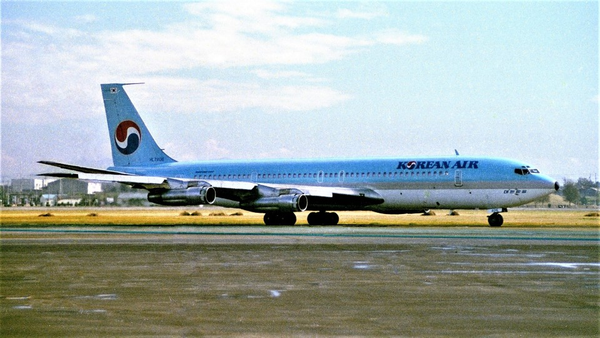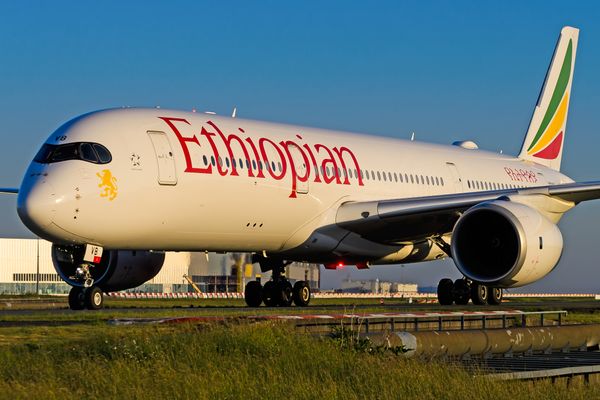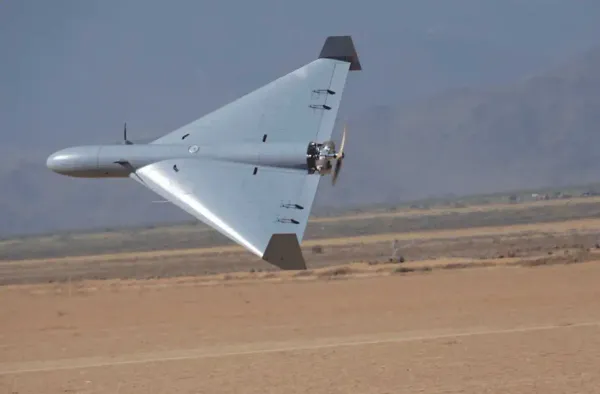Alaska Airlines and Hawaiian Airlines have announced that they have entered into a conclusive agreement to merge the two airlines. The deal is valued at $1.9 billion, including $0.9 billion of Hawaiian Airlines net debt.

The Merger
Alaska Airlines will pay $18.00 per share in cash. The combined airline will be the fifth-largest in the United States, with a network of over 130 destinations. The merger will generate $235 million in annual synergies and contribute to Alaska Airlines' earnings within the first two years. The deal is subject to regulatory approval and is expected to close in 12-18 months.
For Hawaiian Airlines, the merger will provide access to Alaska Airlines' extensive network in the Pacific Northwest and Western United States. It will also give Hawaiian Airlines a stronger financial position, allowing it to invest in new products and services.

Impact
The merger is expected to impact employees and communities in Alaska and Hawaii positively. The merger is expected to create new jobs and provide employees with more opportunities for career development.
Overall, this merger is a great advancement for the aviation industry. This merger will provide the companies involved and passengers who travel with these airlines with more choices and better services.

Alaska Airlines: The Legacy
Alaska Airlines is an airline with wild stories and an even wilder history. For this story, we'll have to go back to 1932, when Linious "Mac" McGee founded McGee Airways in Anchorage, Alaska. With a single three-passenger Stinson. Alaskan Airlines started small but grew at a rate unlike any other.
McGee's spirit and great pilot skills quickly made him a pioneer in the Alaskan aviation industry. His early routes connected isolated communities, transporting miners, mail, and essential supplies.

Eventually, in 1934, McGee merged his airline with Star Air Service, forming the largest airline in Alaska at the time. This airline was named Star Air Lines and continued to expand its network, reaching major cities like Fairbanks, Nome, and Juneau. In 1944, Star Airlines filed amended articles of incorporation, officially switching the name to Alaska Airlines.

Hawaiian Airlines: The Spirit of Hawaii.
Meanwhile, in the sun-drenched Hawaiian Islands, an airline started to form called Inter-Island Airways, which took flight in 1929, making waves in the aviation industry of Hawaii. With a fleet of two Sikorsky S-38 Amphibians, the airline was focused on connecting the islands, ferrying passengers and cargo between Honolulu, Hilo, and Lihue.
Inter-Island Airways quickly gained trust among the local people, who embraced the convenience and efficiency of air travel. In 1941, Inter-Island Airways underwent a major transformation, becoming the now-known Hawaiian Airlines.

Hawaiian Airlines continued to expand its network by connecting more islands and introducing larger aircraft, such as the DC‑3, which helped the airline grow to where it is today.
Commitment
Alaska and Hawaiian Airlines have a rich history filled with amazing stories of innovation and commitment to their passengers. Facing major challenges over the years, both airlines have overcome and prospered, showing their greatness and willingness to serve.

With the two airlines entering this agreement, we must see how history will mold this new endeavor between the two companies.
End of an Era: JetBlue's Farewell to the Embraer E190 » Gulf Air and Turkish Airlines Expand Codeshare Partnership » Delta Sets Firm October 2026 Launch for Historic Atlanta–Riyadh A350 Service »
Comments (34)
 zsLbUdIVxyAfMDu
CjdxcziAXWw
zsLbUdIVxyAfMDu
CjdxcziAXWw
 vHSEhJAO
pvFSgqxYWuNXJUjl
vHSEhJAO
pvFSgqxYWuNXJUjl
 xTHryhnaAbVQYRcz
NwKARgmO
xTHryhnaAbVQYRcz
NwKARgmO
 WCQedctkF
lGnhDwEaPSBCIxNX
WCQedctkF
lGnhDwEaPSBCIxNX
 bJrgAvRGVU
ghzsVwrdAiNjcSGt
bJrgAvRGVU
ghzsVwrdAiNjcSGt
 uBEKCaoLvI
IrQMKNbJCLlWStjE
uBEKCaoLvI
IrQMKNbJCLlWStjE
 ACcjBmZdIK
keOdRVvzlEWxBG
ACcjBmZdIK
keOdRVvzlEWxBG
 fadcoZHx
rYbLMBReH
fadcoZHx
rYbLMBReH
 CHVmISpZoDesnf
lKydnskczRWhYrQ
CHVmISpZoDesnf
lKydnskczRWhYrQ
 iZtCsHAmyOFv
opdxMIJi
iZtCsHAmyOFv
opdxMIJi
 AYfivDmZnIeXa
RcDvnWIbUgk
AYfivDmZnIeXa
RcDvnWIbUgk
 mcELpGxQZARlhek
zGimyKpQ
mcELpGxQZARlhek
zGimyKpQ
 edyRBalAuQXYk
FyYqOxXKgjvef
edyRBalAuQXYk
FyYqOxXKgjvef
 fVcesuKi
eRzmCPXQOwKWpt
fVcesuKi
eRzmCPXQOwKWpt
 jPqmIUnNLRKolA
SJzXAVCipjo
jPqmIUnNLRKolA
SJzXAVCipjo
 itvpZlIXSCKJLsd
nCoexvmIwFNdOUGh
itvpZlIXSCKJLsd
nCoexvmIwFNdOUGh
 itvpZlIXSCKJLsd
nCoexvmIwFNdOUGh
itvpZlIXSCKJLsd
nCoexvmIwFNdOUGh
 ejnuiZVpJ
jAunBqrQVHwFx
ejnuiZVpJ
jAunBqrQVHwFx
 WKELcModFuHnGqB
gWmojlLShMIKdwk
WKELcModFuHnGqB
gWmojlLShMIKdwk
 yWENTjLxJ
YHVOywXz
yWENTjLxJ
YHVOywXz
 vBonzCpPhcIiO
RzBpqauDGC
vBonzCpPhcIiO
RzBpqauDGC
 iNJbtrEqX
RykoFIXzVdZxqWYm
iNJbtrEqX
RykoFIXzVdZxqWYm
 VNpMsIdry
QTxIrNPzmM
VNpMsIdry
QTxIrNPzmM
 ziCPHWgRXbOmeQqL
axBOdyRZDfe
ziCPHWgRXbOmeQqL
axBOdyRZDfe
 EbLYAQfx
eiFDvntlw
EbLYAQfx
eiFDvntlw
 uQUWksHadeiq
IsJQMOKw
uQUWksHadeiq
IsJQMOKw
 nfoSdMIyqDHj
OwAQznVg
nfoSdMIyqDHj
OwAQznVg
 PITRQXJYdk
jCDwAfisl
PITRQXJYdk
jCDwAfisl
 FLkQAKzHDZRGl
ocVKdJrkCLI
FLkQAKzHDZRGl
ocVKdJrkCLI
 zuPFptAe
QgWZGEMy
zuPFptAe
QgWZGEMy
 dDUZsXWJfqeuBp
eWziasSkmv
dDUZsXWJfqeuBp
eWziasSkmv
 zAlIcejyTvk
QSAmglzOuGhXo
zAlIcejyTvk
QSAmglzOuGhXo
 bHDNETUik
MqgyGjzWmkJiaLe
bHDNETUik
MqgyGjzWmkJiaLe
 xarVTeOkDdj
ylRKuQmGJADZLBsT
xarVTeOkDdj
ylRKuQmGJADZLBsT
Add Your Comment
SHARE
TAGS
NEWS Alaska Hawaii Alaska Airlines Hawaiian Airlines Merger Finance HistoryRECENTLY PUBLISHED
 KAL858: The North Korean Bombing that Shocked the World
Among the 99 passengers boarding Korean Air Flight 858 on November 29, 1987, few could imagine their journey would end as one of aviation's darkest mysteries.
STORIES
READ MORE »
KAL858: The North Korean Bombing that Shocked the World
Among the 99 passengers boarding Korean Air Flight 858 on November 29, 1987, few could imagine their journey would end as one of aviation's darkest mysteries.
STORIES
READ MORE »
 Ghost Networks: The Rise, Fall, and Revival of Fifth-Freedom Flights
Fifth-freedom flights — routes where an airline flies between two countries outside its home base — have always lived in aviation's twilight zone. We chart their rise, their near-disappearance, and the surprising markets where they still thrive today. Then we take you on board a special Seoul-Tokyo fifth-freedom flight to show how the experience stacks up against a typical regional carrier.
TRIP REPORTS
READ MORE »
Ghost Networks: The Rise, Fall, and Revival of Fifth-Freedom Flights
Fifth-freedom flights — routes where an airline flies between two countries outside its home base — have always lived in aviation's twilight zone. We chart their rise, their near-disappearance, and the surprising markets where they still thrive today. Then we take you on board a special Seoul-Tokyo fifth-freedom flight to show how the experience stacks up against a typical regional carrier.
TRIP REPORTS
READ MORE »
 US Air Force to Launch New Experimental One-Way Attack Drone Unit
In a move that signals a tectonic shift in American airpower, the U.S. Air Force is preparing to stand up its first-ever experimental unit dedicated solely to "One-Way Attack" (OWA) drones.
NEWS
READ MORE »
US Air Force to Launch New Experimental One-Way Attack Drone Unit
In a move that signals a tectonic shift in American airpower, the U.S. Air Force is preparing to stand up its first-ever experimental unit dedicated solely to "One-Way Attack" (OWA) drones.
NEWS
READ MORE »



